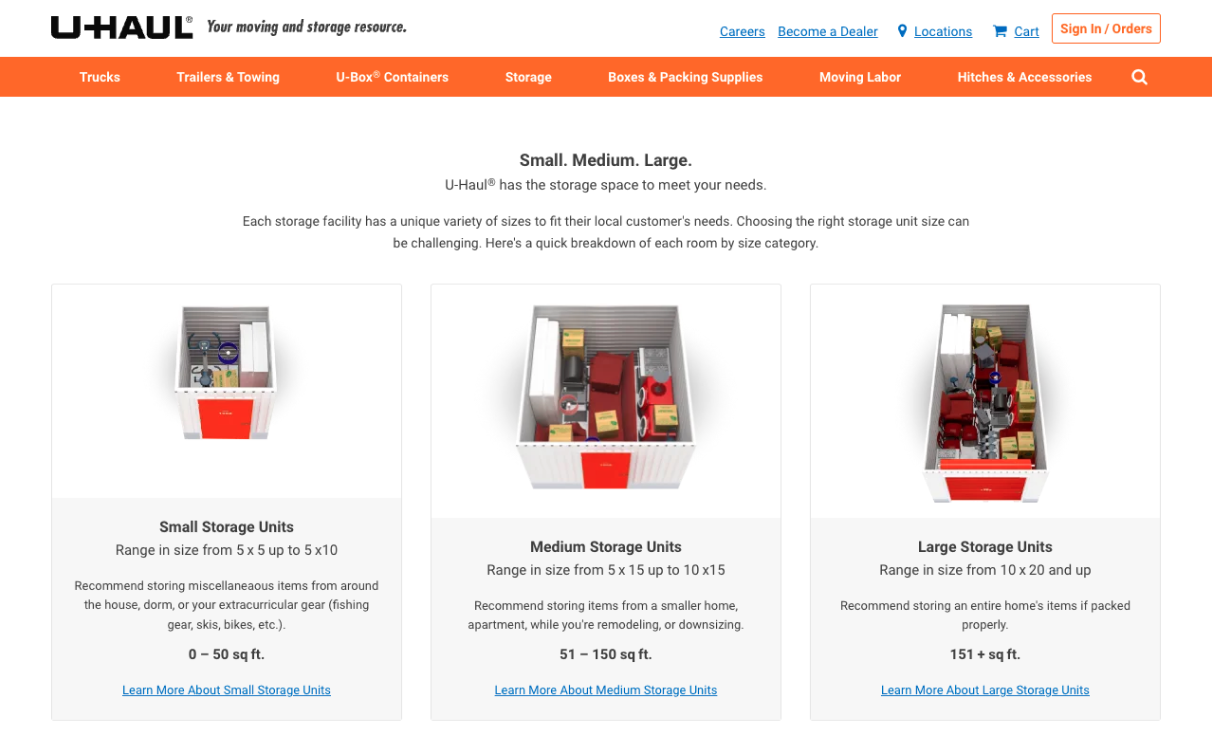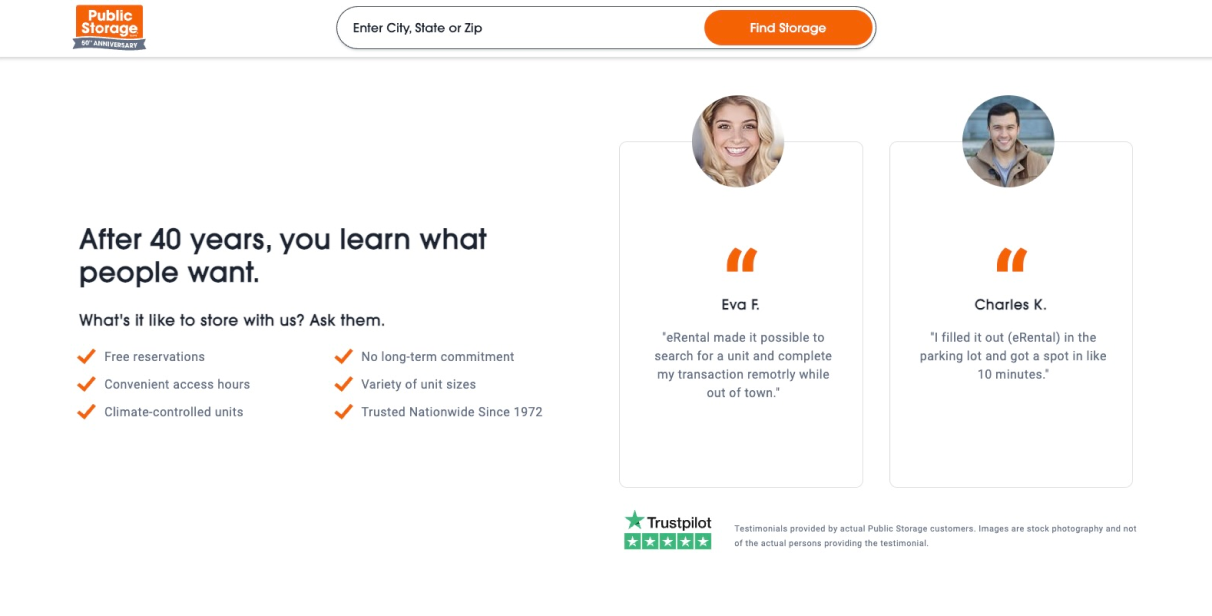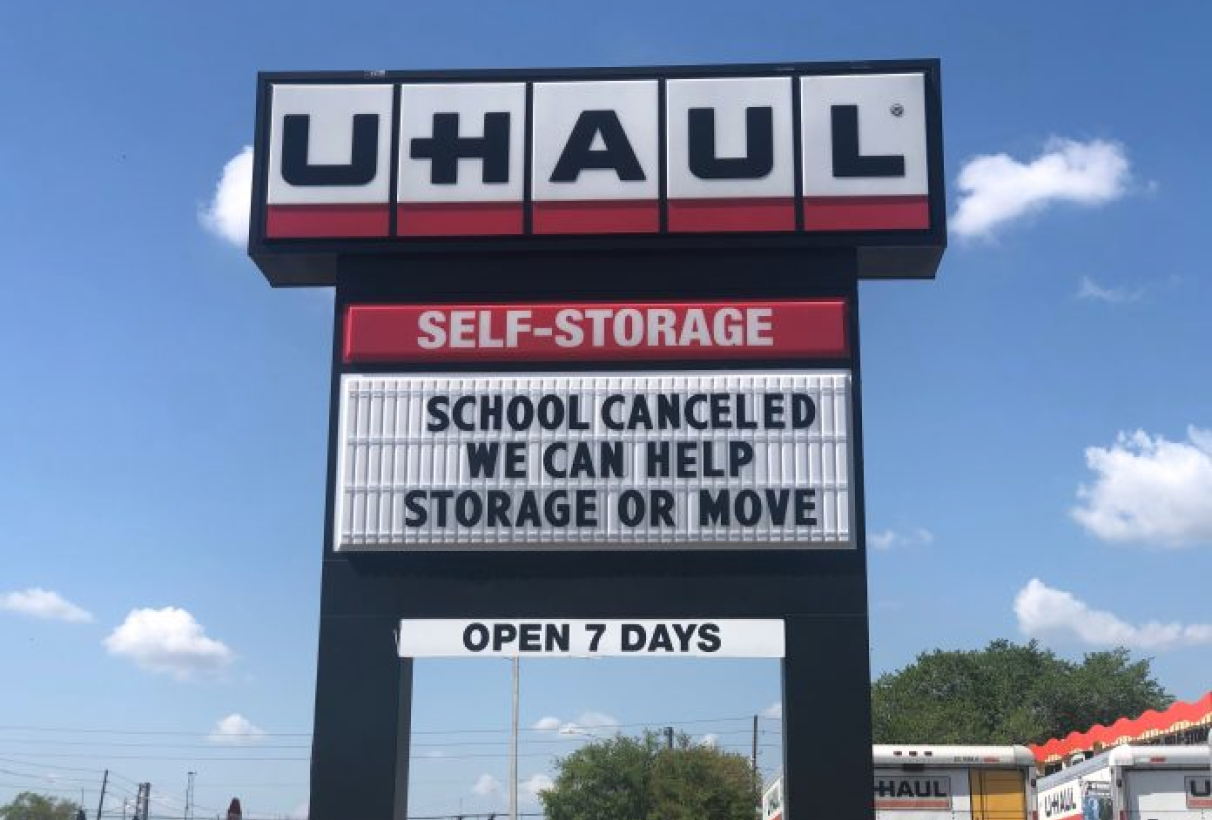Despite the recent pandemic and economic crises, the self-storage industry is booming. It reels in over $39.5 billion in yearly revenue. People use self-storage during a significant life event, like a move, death, or cleanout.
But once customers pick a self-storage, they’re likely to stick with them. That makes the self-storage industry competitive. Without the proper sales and marketing strategy, it can be hard to stand out from the competition.
In our guide, we will cover self-storage sales and marketing strategies. Plus, how they can benefit your business to earn more revenue.
What are self-storage sales and marketing?
Self-storage sales and marketing is the selling or promoting a storage unit to a tenant.
For example, a self-storage business in a college town will have students as its clientele. These students will likely value low costs above everything else. So, marketing affordable prices is a smart strategy for this self-storage business.
Customers will also have questions about your storage solution. They will want to speak to someone on your team in customer acquisition or sales.
Continuing the college example, you can answer sales questions using text messaging. Studies show that texting is the preferred method of communication for students.

What are the benefits of self-storage sales and marketing?
Self-storage is a lucrative business. It has a high customer lifetime value and low maintenance costs. The average rental time for a self-storage unit is 14 months.
Still, it can be challenging to keep occupancy due to constant turnover. Self-storage marketing can help you deal with tenant turnover by:
- Increasing your brand awareness
- Targeting active buyers in your location
- Generating interest for new buyers in your area
- Building a reputable brand in your surrounding community
- Renting out more storage units
- Increasing your revenue
Sales and marketing basics for the self-storage industry
Let’s first cover the fundamentals of sales and marketing that you need to know.
1. Understand your target customers
It’s crucial to understand who your customers are to sell to them. Not everyone is going to be your ideal customer. When doing market research, ask yourself the following questions.
What’s unique about your demographics?
The reason people need self-storage solutions will vary depending on your surrounding area. Most people rent storage for significant life events. Think of a move, a new child, a death in the family, or home renovation projects.
For example, if you’re near a college, your renters are likely seasonal (every semester or quarter.) Urban areas will need nearby storage due to smaller living spaces. Rural or suburban areas will look for storage solutions off a major highway.
What does my target customer value?
Your target demographic will help you determine the right value proposition.
University students might value an affordable unit above anything else. City dwellers will look for storage solutions that can help them transport items. Suburban areas can travel further because everyone has a car.
2. Focus on your value proposition
At your core, your business is no different than your competitors. What makes your self-storage solution a better option for renters than your competition?
Think about your target demographic's values, and position yourself around those values. Your value proposition can be that you’re the safest, cleanest, or most affordable in the area.
You can share photos and customers testimonials to back up your claims if you're the cleanest. If you’re the most affordable option, show comparison rates with your competitors.
3. Create an online presence
Your website and review sites are where most people will come to learn about your business. The information they gather will help them decide if they will choose you or not.
Add general information like contact info and your location. Also include other essential info, like the size of your storage units or renting cost.

4 self-storage marketing ideas and strategies
1. Go local with digital ads
Self-storage marketing requires you to target customers within a certain mile radius. That makes it essential to focus on advertising in your local community. One of the best ways to target your local audience is to set up geo-specific ads.
Marketers recommend spending seven to eight percent of gross revenue on marketing. A worthwhile investment return is $5 for every dollar spent as a rule of thumb.
Some of the best sites for digital ads are Google Ads or Facebook Ads.
Google Ads allow you to buy ad space for specific keyword searches, i.e., “self-storage units near me.” Ads appear before organic keyword results. That gives you a higher click-through rate since most people focus on the top results of a Google search.
With Facebook ads, you can target Facebook users in your area who fit your target demographic. For example, if you want to appeal to movers, you can set up ads in areas where new neighborhoods are developing.
Digital ads allow you to track your performance to help you optimize your ad campaigns in the future. Segmenting your ads to different types of renters lets you appeal to a larger audience.
2. Create online business profiles
Creating business profiles is one way to gain an online presence. Google, Yelp, and Facebook are common places people make business profiles. SpareFoot is another site that helps customers find storage solutions near them.
An online business profile is another way for tenants to discover your business. When creating business profiles, remember to include what sets you apart from competitors. Adding high-quality graphics or replying to customer reviews can help you appear more credible.
3. Ask for customer reviews
Word of mouth is popular for community shoppers. Seventy-two percent of customers say they won’t take action until they read a review first.
You can focus on gathering reviews on your website or business profiles. These are common places customers go to look for self-storage reviews.
Reviews are where they garner trust for your business, so knowing how to ask for reviews is essential. You can ask for customer reviews after a positive interaction or survey results. You can also offer a discount on future storage or create a referral program in exchange for reviews.
Read our article “How to ask for customer reviews using business texting” to learn more about how to gather customer reviews.

4. Target offline audiences
Not everyone in your target audience will be online. So, don’t forget to stick to the old-school basics like flyers, billboards, or newspaper spreads.
Billboards off a major highway can work for self-storage businesses in rural areas. Eighty-five percent of tenants come from “drive-by traffic,” according to The Parham Group.
You can send local mailers with specials to your community to attract tenants.

The bottom line
Location is crucial for your self-storage business. So, make sure your marketing efforts center around the fact. Figure out who your customers are, and present yourself as the solution to their problems.







